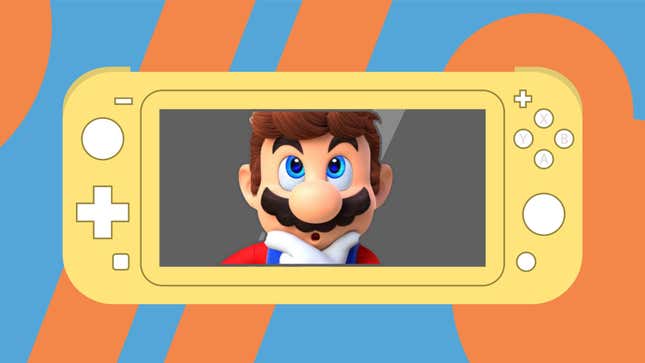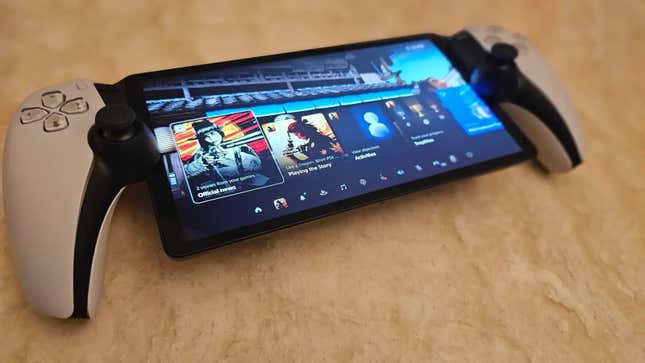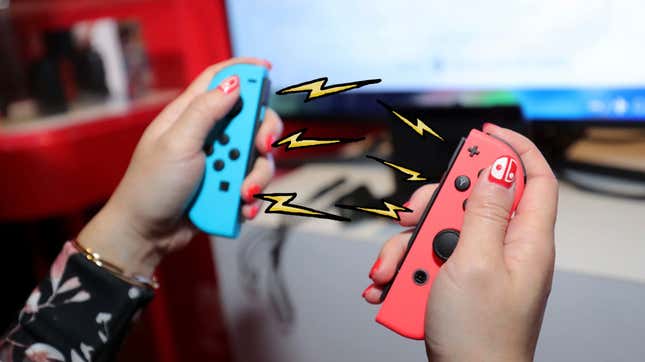
No matter what you’re doing or what you’re playing at the moment, it feels like we’re all just biding our time until the announcement of the follow-up to the Nintendo Switch. Colloquially known as the Switch 2 around these parts, reporting on the forthcoming console has picked up tremendously since late last year, and rumors of its delay to 2025 spread like wildfire mere months ago. A slim 2024 release window for everyone’s favorite handheld console seemingly points to Nintendo holding back some titles for a console launch early next year, and all the while, more rumors of the Switch 2’s form factor and tech keep sprouting up. Nintendo hasn’t confirmed anything, but with gaming’s big season of reveals right around the corner, now seems like as good a time as ever for the company to straight up announce this thing and begin the rollout. With that in mind, here’s everything we currently know about Nintendo’s next-generation console.
Will it really be called the Switch 2?
The first thing to say is it almost definitely won’t be called the “Switch 2.” Nintendo has frequently iterated on its successful handheld designs, the DS becoming the DSi, the DSi XL, then eventually the succeeding 3DS and its own iterative generations. But they’ve never put a “2” on anything; they’re more likely to use a “U” or something equally peculiar. However, let’s stick with “Switch 2” for the sake of ease; people online are constantly campaigning for it to be called the Super Nintendo Switch, but we don’t want to get their hopes up.
Will a Switch 2 be that different?
Of course, knowing what to expect from Nintendo is never that easy. For Sony or Microsoft’s forthcoming projects, you’d not get particularly good odds betting against both being in early design stages for beneath-TV boxes called the PlayStation 6 and Xbox Flowerpot 87, or whatever deranged name the behemoth concocts next. But Nintendo is the sort of company that might spring out of nowhere with a super-under-powered console that comes with a plastic sensor, operated by two remote controls; or a handheld gaming device with two screens, only one of them is a touchscreen, and it folds in half. They are…unpredictable.
The general thinking is that the success of the Switch is too vast to make any enormous changes over its own unique design. In 2017 we were all blinking in surprise at a dockable handheld device with controllers that fell off the sides. It was, as ever, wonderfully strange and innovative, and despite tech that was already out-of-date on its release, it’s held up and entertained us for seven years. It would seem an enormous risk, at this point and with such market saturation (the Switch is said to have sold 132 million units, outselling even the PS4’s lifetime sales, with time to go) to release something that didn’t at least feel compatible with the Switch. Analyst Dr. Serkan Toto told GI.biz in January 2024 that he believed “it will be similar to the current Switch,” albeit with “some bells and whistles.”
It would also seem like some special kind of madness for Nintendo to step away from the hybrid model of the Switch, where it docks as a standard console and lifts out as a portable gaming device, in a time where Sony’s trying to retro-fit the concept to its PS5, and Microsoft wants to achieve the same through mobile devices. Rumors are that this is the case.

One 8-inch screen, and only one
Nintendo is notoriously silent when it comes to new consoles, preferring to surprise audiences with the reveal and imminent release of its latest peculiar, form-twisting approach to gaming. The original Switch itself was not officially revealed until October 2016, ahead of its release in March 2017—and this was under the added pressure of the failure of the Wii U. Similarly, no one knew what the DS would look like until July 2004; the handheld device launched that November. There’s no reason at all to think Nintendo will change its ways for the Switch follow-up, and we shouldn’t expect any serious announcements or technical details before this summer.
However, the Japanese company’s best efforts to remain enigmatic for each generation have always been thwarted by both leaks and inescapably public deals made with manufacturers. The Switch 2’s most specific information so far has recently emerged via the latter, with Bloomberg’s report that Foxconn-owned Sharp Corp is supplying large numbers of 8-inch LCD screens to a Japanese company. While nothing is officially announced, and no one involved names names, there really isn’t another option than this being for Nintendo’s next effort. This compares to the Switch’s 6.2-inch screen, and the 7-inch version on the Switch OLED.
This information, paired with how things have worked out historically, does suggest there aren’t any major surprises to come on the scale of a Switch 2 coming with a second screen, or a clamshell design, or only operating underwater. Even Nintendo gave almost two years’ warning that the DS was going to be a two-screen device. However, it’s Nintendo, so we wouldn’t bet against being entirely wrong here. In fact, it would be delightful if we were.
What other tech can we expect?
Of course, you can’t just release a console and then wait for the games to arrive. If the Switch 2 really is coming out this holiday, then development kits (modified versions of consoles, sometimes PC-based, that allow developers to interact with the hardware) will have to already be in the hands of games developers. Clearly, any developer Nintendo trusts at this stage with such secret information will be drowning in NDAs, specifically chosen with the goal of there being a broad range of top-quality games available on day one. (This doesn’t always work—ask the Xbox 360…) However, this process is inevitably vulnerable to leaks.
We learned through GDC’s State of the Industry 2024 report that 8% of surveyed developers are currently working on games made for the Switch successor, and sources with devkits recently told VGC that the device would match the Switch’s option to operate in a portable mode.
Matching the information that Sharp Corp is doubling its output of LCD screens this year, developers also anonymously told VGC that the device would have a standard LCD display, and still use cartridges for games.
The other odd slip of information came about via the FTC’s investigations into Microsoft’s purchase of Activision. A heavily redacted document was released as part of the trial, in which Activision Blizzard execs met to talk about the “NG Switch,” during which its tech was described as similar to that in the PS4 and Xbox One.
Nintendo has never fought to be at the bleeding edge of tech, prefering to launch with solid enough specs and letting the games do the innovating, but Gen 8 console comparisons seem surprisingly behind. However, Eurogamer has since reported that developers have seen something much more powerful behind closed doors, a device that can run Unreal 5 engine games, and even offer DLSS graphics. This would bring it more in line with something lagging just behind the PS5 or Series S, which is generally the spot Nintendo aims for.
Clearly we’re expecting to see a lot more than the Switch’s measly 32GB of on-board storage, but given support for SD cards, rather than the need for entire additional drives, it’s unlikely it’ll go over 256GB. We’re inclined to guess as low as 128GB. That’s of course tiny compared to the terabyte of SSD storage that comes with the PlayStation Slim.

How much will the Switch 2 cost?
The best guess we have so far is $400. That’s the prediction of Dr. Serkan Toto, although it’s fair to say it’s a guess. A reasonable guess, given the original Switch launched at $300 in 2017, and inflation alone puts that at $375 today.
You may have noticed that when we’ve mentioned the rumors of an 8-inch LCD screen, there’s no mention of an OLED version, as was later launched for the Switch. Given that, should this prove accurate, the device’s screen will be nearly two inches larger than the previous generation, Nintendo is likely picking LCD to keep down costs at launch, with intentions of a fancier screen a couple of years later.
Will a Switch 2 be backward compatible?
Sorry to be Captain Clickbait, but, yeah, we don’t know the answer to this question. Nintendo has sometimes released backward compatible consoles: the Wii U played Wii games, early versions of the Wii would play GameCube games, and the 3DS would somewhat reluctantly play DS games. But disc and cartridge formats have meant other generational changes were entirely fresh starts.
Yet, it just feels so unlikely it won’t be this time. As Switch sales are predicted to collapse in 2024, Nintendo will be desperate for customers to want to buy a new device, and telling them their entire catalog of games is now useless to them doesn’t feel like the right move. Especially given how user-friendly the Xbox Series and PS5 have been in this regard.
In a very rare acknowledgement of the concept of there being anything beyond the Switch, Nintendo’s U.S. president Doug Bowser said last October, speaking about an intention to likely allow users to keep using the same Nintendo account in the future, that the company wanted to “help ease that process or transition.”
Just sharing an account between devices is such a novelty for Nintendo, it does offer some hope that perhaps our games and progress might be “eased” over too.
New magnetic Joy-Cons?

One of the most promising rumors to come out about the Switch 2 is that its Joy-Cons will abandon the rail attachments on their sides in favor of magnets. As reported by Vandal, which correctly tipped everyone off to the existence of the OLED Switch, Nintendo seems to be abandoning the finicky connectors on the ends of the Joy-Cons for something much more immediate and assured. Notably, worn out Switch Joy-Cons begin to feel very loose around these rail connections, and sometimes don’t even snap entirely into place, giving the console a feeling akin to a cheap plastic toy. Magnets, on the other hand, run far less risk of wearing down as easily, and lead me to believe that the Switch 2 will be more sturdily built. Of course, too powerful a magnet might have some other effects Nintendo may want to avoid, so who’s to say what we’ll wind up getting.
Better battery life on the go
Another promising rumor that recently came to light suggests that the Switch 2 might boast better battery life undocked. As reported by IGN, a conversation between two content creators seemingly revealed that one of them had heard the Switch 2 would be “clocked faster than we expect” when docked, meaning that it would be even more powerful than the Switch when it’s hooked up in TV mode. Alternatively, they heard that the Switch 2 would be “clocked crazy low” when it’s undocked, meaning it would draw far less power and theoretically be able to extend its battery time while being used in portable mode. Considering the relatively short undocked battery life of the original Switch, and how much Nintendo has invested in subsequent models that last substantially longer, a development like this comes across as a no-brainer.
When is the Switch 2’s release date?
Though analysts kept tossing around late 2024 projections for the Switch’s successor, it seems as though plans have recently shifted. Despite early rumors suggesting the Switch 2 would launch by the end of this year, multiple reports say Nintendo has since delayed the system to March 2025, nearly eight years after the launch of the Nintendo Switch
The revised launch window aligns with a January 25 Bloomberg report that claimed Nintendo was aiming to have about 10 million units of the Switch successor ready by then. Additionally, the delay seems to be motivated by the company’s desire to meet demand and fight resellers, which led to widespread shortages of the Switch when it launched in 2017.
Updated: 05/01/24, 4:45 p.m. ET: Added new details.
Updated: 01/26/24, 12:17 p.m. ET: Corrected some errors about backward compatibility.





